Everything You Need to Know About Goalball for Visually Impaired Athletes
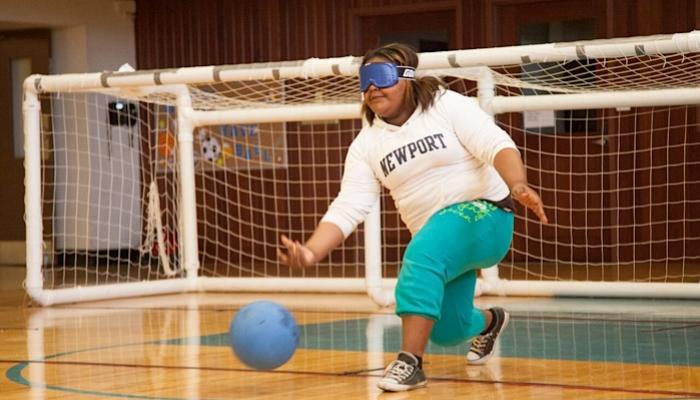
By Heather Bowman-Tomlinson
How do I watch and know what’s going on in Goalball?
The first rule of watching Goalball is to be quiet. Only cheer between the official’s whistle blow to stop the clock and when the official says “Quiet Please.” Fans who are loud at the wrong time can actually get their team a Noise Penalty. Why is this important? Because the players in goalball need to be able to listen to the ball to the other players. They enjoy your cheers, but need quiet during game play.
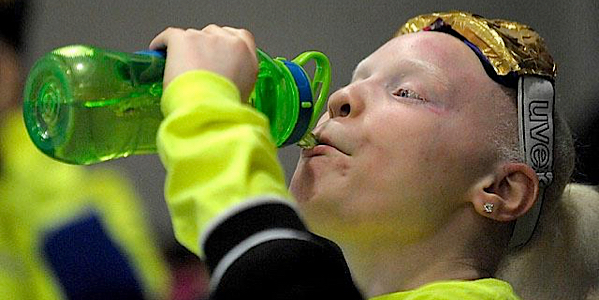
How is the Game Played?
The basic point of goalball is to score a goal… with the ball… hence the name! Similar to soccer, a player scores a goal by getting the ball through the opponent’s net. Unlike soccer, there are no rules saying you can’t grab the ball with your hands. There are a maximum of 6 players per team, 3 on the court at any given time. All players are blindfolded or eye patched and blindfolded to keep things even.
The ball weighs 2.75 pounds and has bells in it so the players can hear it. Balls can be thrown at more than 40 MPH!
A game is made up of two 12 minute halves. A Mercy is called if the leading team is up by 10 points.
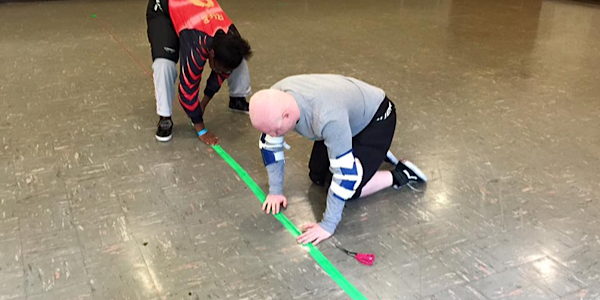
How is the Goalball Court Set Up?
The goalball court is broken up into zones by lines across it. All lines are made by placing tape over string and can be felt by the players. Going from one end to the other the lines are as follows:
- Goal line: At the front of the net, the ball must pass completely over the line to score.
- Wing Line: A shorter line halfway between the goal line and the Team Line. Usually the wings play on these lines.
- Front line, Team Line: Past the wing line, it has smaller perpendicular markings for orientation. The center usually plays here.
- Highball line: If the ball does not hit the ground before this line, it’s a penalty, and the thrower will have to defend a penalty shot.
- Midline: After the defending team has made initial physical contact with the ball, they must get the ball back across the midline towards the other team within 10 seconds. A 10 second penalty is a team penalty and the opposite team chooses the defender to throw against. Also, If the ball is blocked, and it rolls back over the midline before the defenders gain control of it, it’s called a ball over and there is a loss of possession.
- Longball line: The ball has to hit the ground a second time before this line. If it does not, it is a longball penalty and the thrower will have to defend against a penalty shot.
- Other Team’s Front line, Wing Lines, and Goal Lines.
- First sideline: If a ball is thrown over the sideline it is Out, and there is a loss of possession. The ball is dropped in on the receiving team’s wing line and there is a full 10 seconds to return the ball. If the ball hits a defender and rolls out of the court, it is Blocked out. Clock time is not stopped, and the ball is dropped back at the wing line.
- Second Sideline: If a ball is blocked by a defender and it rolls past the second sideline, it is a Line out. Clock time is stopped and the ball is dropped back in at the wing line.
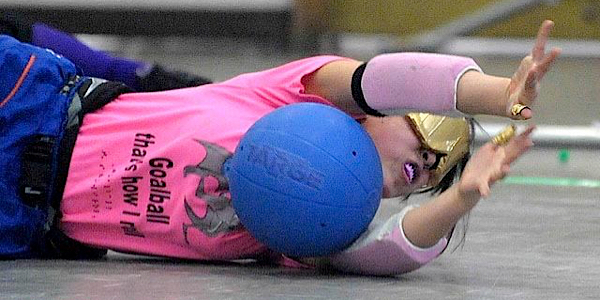
It may sound complicated, but really goalball is a fast-paced and exciting game! Getting your child involved in goalball is a great way to encourage team building, communication skills and physical activity. Goalball is regulated by the International Blind Sports Federation (IBSA). Learn more here!
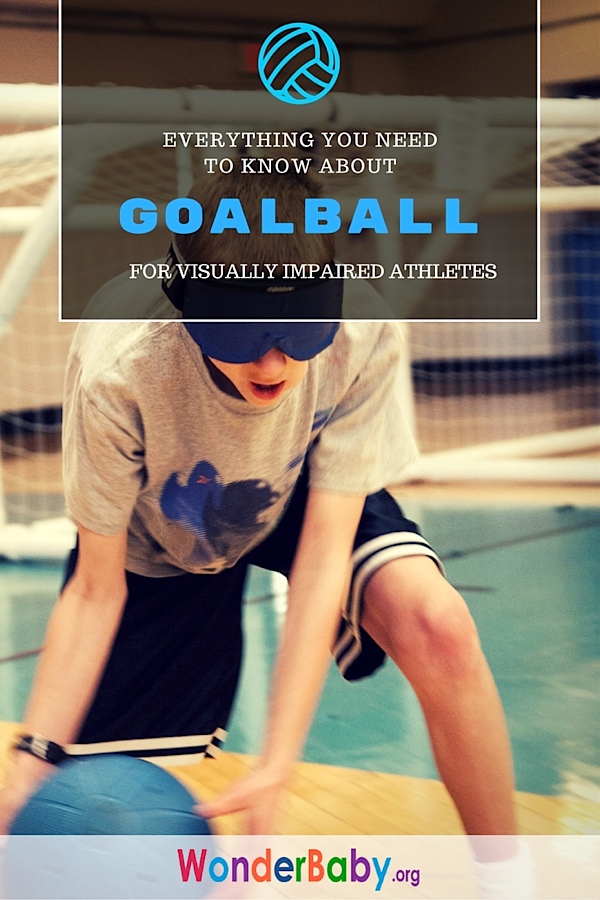
Related Posts
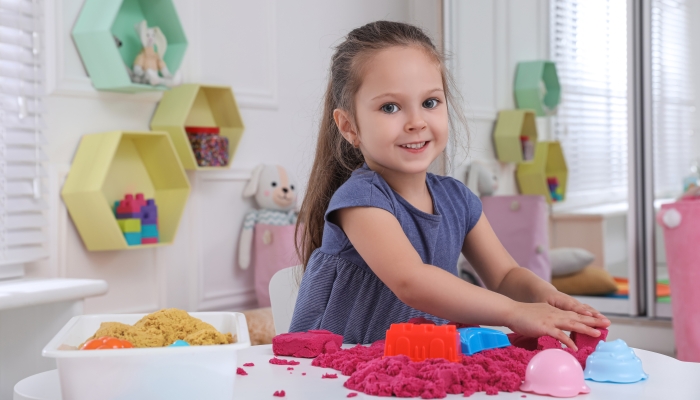
Play, Sensory Activities
Easy Kinetic Sand Recipe
Looking for a fun activity to do with your kids? Check out this easy kinetic sand recipe using ingredients you probably already have in your house!
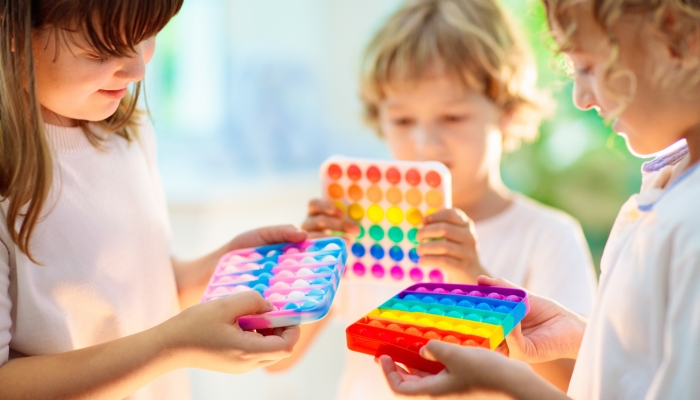
Autism, Sensory Activities, Toys
5 Best Sensory Seeker Toys
Check out our guide to the best sensory seeker toys for kids who like to rock, spin, chew, and fidget. It’s not just about fidget spinners!
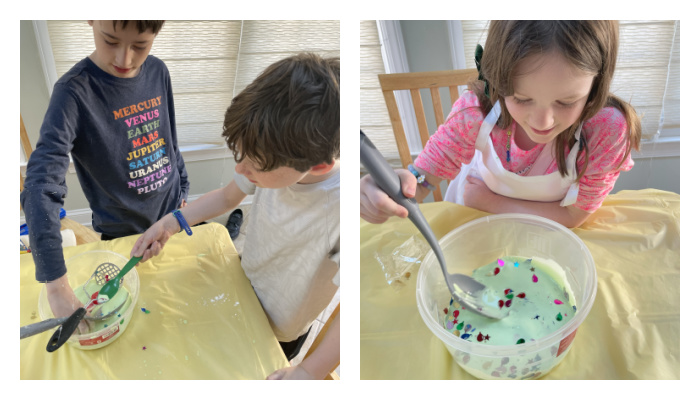
Play, Sensory Activities
Easy Oobleck Recipe
Making oobleck combines science, having fun, and sensory play while learning what a non-Newtonian fluid is.